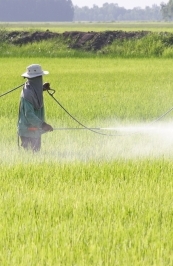In the past several decades, we’ve noticed an alarming increase in certain health conditions. Some, like diabetes and heart disease, can be directly attributed to lifestyle factors. Others, like neurodevelopmental and behavioral disorders in children, seem to baffle many health experts.
While more detailed definitions of the diseases, increased awareness, and improved diagnostics may be partly responsible for the change, researchers agree there are other factors – mainly chemical exposure.
It’s a sad reality that our children are growing up in a toxic soup. We experience a constant bombardment of dangerous chemicals in our food, home, and every other aspect of life. Even worse, research is rarely performed on how these chemicals affect our health, especially the developing brain of a fetus or infant.
In 2006, scientists from Harvard University identified five chemicals deemed toxic to the brain (lead, methylmercury, polychlorinated biphenyls, arsenic, and toluene). These chemicals, often the byproducts of modern manufacturing, can be found in the soil in which our food is grown, the water we drink, and the products we use on and near our body. The researchers noted that chemical exposure can change the developing brain, later manifesting as hindered school performance, delinquent behavior, neurological abnormalities, and reduced IQ points.
An update by the same researchers, which was recently published in the journal <em “mso-bidi-font-style:=”” normal”=”” style=”color: #6e6b54;”>Lancet Neurology, adds six more brain-harmful chemicals to the list. Excessive manganese was found to reduce math scores and increase hyperactivity. Fluoride (yes, THAT fluoride) was associated with a 7-point reduction in IQ among school-aged children. Both manganese and fluoride are found in drinking water, while the other four are used as solvents or pesticides and contribute to deficits in social development and increased aggression. Higher levels of these chemicals in maternal blood and urine were linked to brain disorders in children.
So…abandon all modern conveniences, move to the wilderness, and live off the land? Not necessarily! There are some less drastic steps you can take for yourself and your family to minimize your risk:
1. Educate yourself – Visit the Environmental Working Group (EWG) for more information about chemical exposure in your life and how to make healthier choices in the products you buy and the food you eat.
2. Filter your water – Modern water treatment helps kill viruses and bacteria that may be harmful, but it does so with harmful chemicals! Invest in a high-quality water filtration system, like reverse osmosis, to protect yourself.
3. Eat smart – You don’t need to eat all organic, especially if the expense of organic eating is a concern. Visit the EWG’s list of the Dirty Dozen and Clean Fifteen to know which fruits and veggies you should buy organic.
4. Clean responsibly – See that skull and crossbones on the packaging for that floor cleaner? It’s not a good sign! Because homes are more energy efficient, they also keep those chemicals inside longer than ever before. Learn about using natural cleaners you can buy in the store, or make your own using vinegar and water


Recent Comments